9 things you probably don’t know about the Wright brothers until you visit their hometown of Dayton, Ohio
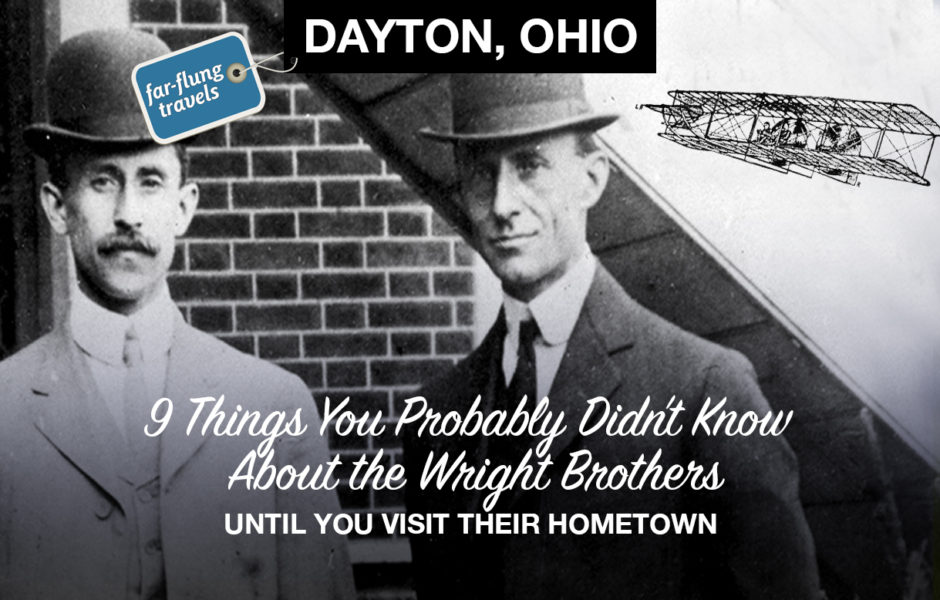
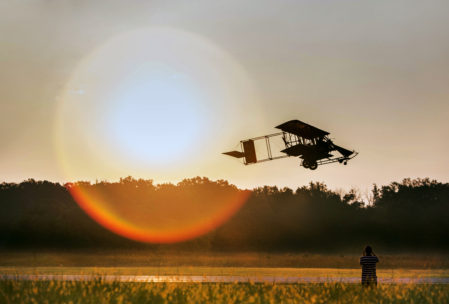
Pay $100 for a membership to the Wright B Flyer Inc. Museum and then you can take off in a replica Wright “B” Flyer. This photo by Laura Watilo Blake appear in her book “Ohio: A Photographic Journey,” published by Farcountry Press and available at Amazon.com.
Brothers Orville and Wilbur Wright ushered in the Aviation Age by piloting the first successful manned flight the world had ever seen. They earned their place in the history books on December 17, 1903, near Kitty Hawk, North Carolina, but the years of hard work that preceded and followed took place in Dayton, Ohio. Here are a few things you’ll learn when you visit their hometown and follow the Aviation Trail.
1. Their first career had nothing to do with transportation.
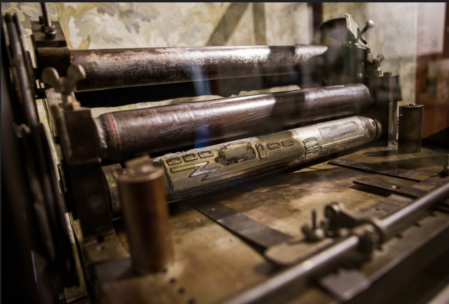
Before they operated a bicycle shop, Wright and Wright Job Printers operated out of the second floor of Dayton’s Hoover Building, which is now part of the Dayton Aviation Heritage National Historic Site.
You may already know that the Wright Brothers built the first flying machine in the back of their bicycle shop, where they repaired, rented and sold bikes. But before that, they were publishers. At 15, Orville and his friend, Ed Sines, created Sines & Wright Printers, but soon had a falling out over business practices.
One client paid them in popcorn and Sines wanted to eat the profits while Orville wanted to sell the popcorn so they could invest the profits in the business. Orville bought out Sines portion of the business and enticed his older brother Wilbur to join the business in 1889.
They printed a newspaper at first, but then they realized they could make more money doing custom jobs. Sines continued to work for Wright and Wright Job Printers at the Hoover Building, located at the corner of West Third and Williams Street. That building is now part of the Dayton Aviation Heritage National Historic Site complex.
By 1892, the brothers were becoming increasingly interested in bicycles and established their first bicycle shop. They continued their printing business for seven more years, but sold it in 1899.
2. The Wright brothers rented space for their bicycle shop in six different locations in Dayton between 1892 and 1908.
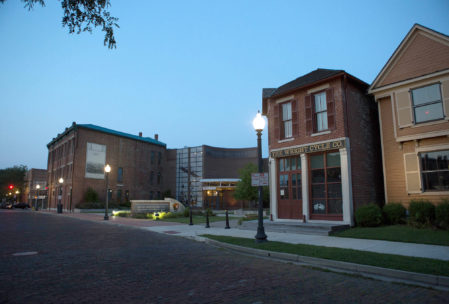
Only one building —22 Williams Street —that once house the Wright Cycle Co. still stands in Dayton.
Two of the buildings the Wright Cycle Co. occupied remains standing today, but only one is in its original location. From 1895 to 1897, the shop was at 22 Williams Street, just a few block away from the home the brothers grew up in.
The building was designated a National Historic Landmark in 1990 and became part of the Dayton Aviation Heritage National Historic Site complex.
In 1897, the brothers moved to the bicycle shop’s final location at 1127 West Third Street. This is the building in which the gliders and Wright Flyer were conceived and constructed. After they started selling aircrafts, the bicycle shop was converted into a machine shop to make parts for aircraft engines and drive trains.
That building, along with the home the Wright brothers grew up in, was purchased by Henry Ford in 1937 and moved to Greenfield Village in Dearborn, Michigan. The historic park, part of The Henry Ford complex, consists of a collection of famous buildings, including Thomas Edison’s Menlo Park laboratory.
WATCH THIS VIDEO ABOUT THE WRIGHT BROTHERS: https://youtu.be/tjOcEd7x9xs
3. There are 5 Wright bikes remaining in existence today.
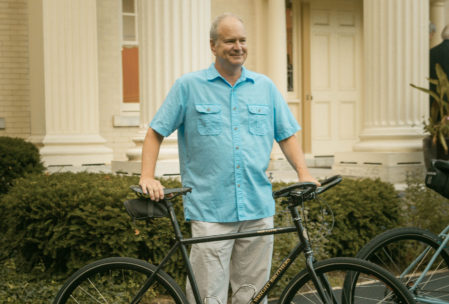
Stephen Wright, the great-grand nephew of the Wright brothers, shows off a new version of the Van Cleve, which is assembled in Dayton, Ohio, by Wright Brothers USA.
When they occupied the building at 22 Williams Street, the Wright Brothers started manufacturing their own bicycles: the “Van Cleve” and a less expensive model called the “St. Clair.” If you’re in Dayton, you can see two Van Cleve at Carillon Historic Park and a women’s Van Cleve at the National Museum of the United States Air Force.
At its store across the street from the Dayton Aviation Heritage National Historic Site complex, Wright Brothers USA sells modern Wright-inspired bicycles —The Van Cleve ($4,750) and the St. Clair ($3,950).
4. The original 1903 Wright Flyer never flew again after its historic flight in North Carolina.
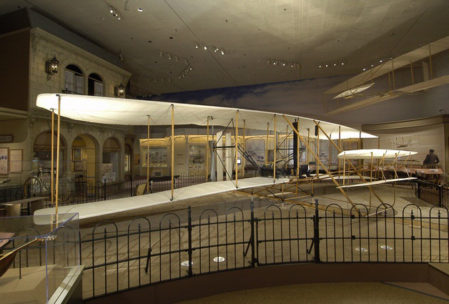
The original 1903 Wright Flyer is now located at the Smithsonian National Air & Space Museum in Washington, D.C.
The Wright brothers took turns piloting their flying machine on Dec. 17, 1903. On its fourth and final flight, Wilbur flew for 59 seconds and went 852 feet — much longer than the previous three flights. However, it lost control. Orville described what happened in his journal: “. . . it began its pitching again and suddenly darted into the ground. The front rudder frame was badly broken up, but the main frame suffered none at all.”
The brothers hoped to repair it so they could attempt to fly again. Soon after, a strong gust of wind caused the plane to overturn and flip, causing irreparable damage. The aircraft is now housed at the Smithsonian National Air & Space Museum in Washington, D.C., so you won’t find it in Dayton.
5. There was a lot of fine-tuning done in Dayton before the Wright brothers created the first practical airplane.
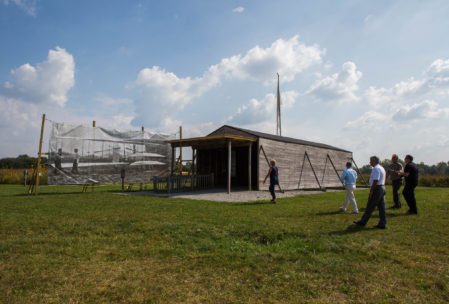
The Wright brothers perfected their flying machine at Huffman Prairie, just outside of Dayton.
After their successful first flight of a heavier-than-air flying machine in 1903, the Wright Brothers came home to refine their designs and piloting techniques at Huffman Prairie, a short trolley ride away from Dayton. Eventually, they landed a military contract for the 1909 Military Flyer and their Wright Model B Flyer was first practical airplane to go into commercial production the same year. A reproduction of the 1909 Military Flyer and an original Model B is on display at the at the National Museum of the United States Air Force.
6. Orville Wright was involved in a fatal airplane crash that set an unfortunate record.
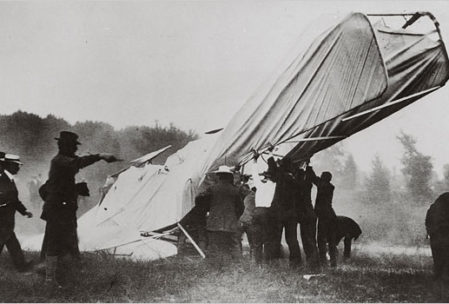
The world’s first airplane passenger fatality took place in 1908 with Orville Wright piloting the plane.
In order to land a contract with the military, the U.S. Army required a plane to carry two people for a set duration, distance and speed. During a test flight on September 17, 1908, Orville was piloting a newer version of the Wright Flyer with Lt. Thomas Selfridge seated next to him. A few minutes into the flight, the wooden propellers split and caused the engine to shake. Orville shut down the engine, and lost control of the aircraft, which nose dived into the ground. Selfridge suffered a fractured skull and died in the hospital, becoming the first passenger to die in airplane accident in the history of aviation. Orville suffered a broken leg, several ribs and a back injury that impaired him. Despite the accident, the U.S. Army continued with the trials and awarded the contract.
7. The Wright brothers never got married.
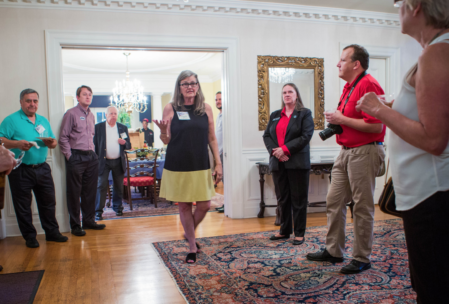
The Wright brothers’ great-grand neice Amanda Wright Lane gives a tour of Hawthorn Hill, the home built by Orville, Wilbur and their sister Katharine after the aviation business took off.
Orville and Wilbur were married to their work, so they never got married to anyone else. Wilbur told reporters he didn’t have time for both a wife and an airplane. Elder brothers Reuchlin and Lorin married and had children, while sister Katharine married later in life. The Wright Brothers’ great-grandniece and nephew, Amanda Wright Lane and Stephen Wright—descendants of Lorin—currently help preserve the family history through the Wright Brothers Family Foundation.
8. You can fly in a Wright replica airplane.
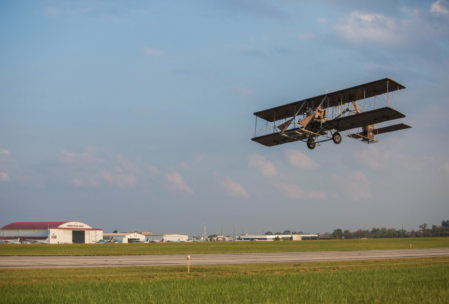
The Wright “B” Flyer replica takes off from Dayton-Wright Brothers Airport.
If you want to feel the wind in your hair and the critters in your face, head to Dayton-Wright Brothers Airport and pay a visit to Wright “B” Flyer, Inc., which has a look-a-like airplane built with modern materials and components. For the cost of a membership to the nonprofit, all-volunteer organization at the $100 level, donors receive an orientation ride and certificate that commemorates the flight.
9. There’s only one genuine Wright Flyer on display in Dayton and in many ways it’s more important than the 1903 Wright Flyer I.
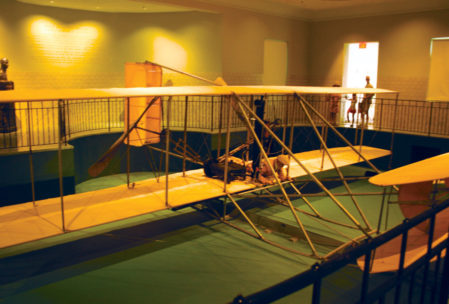
Orville Wright donated this original Wright Flyer III to the Carillon HIstoric Park. This particular model proved that sustained and safe flying was possible.
The 1905 Wright Flyer III was the first practical fixed-wing aircraft. Wilbur Wright circled Huffman Prairie, their Ohio testing grounds, for 39 minutes and 23 seconds, going a total distance of 24 miles, then landed safely and without damage. Orville restored and donated the aircraft to the Carillon Historic Park in the late 1940s with 60 to 80 percent of the original parts.
Want to learn more about the Wright Brothers when you visit Dayton, Ohio?
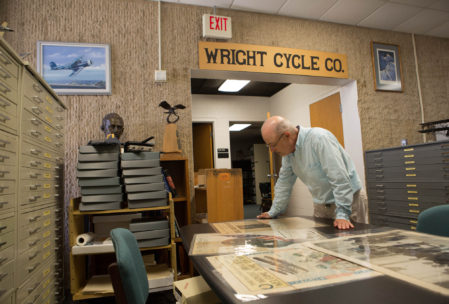
The Wright State University Special Collections and Archives.
The Wright State University Special Collections and Archives includes artifacts from the Wright Brothers including journals, photographs, medals and more.
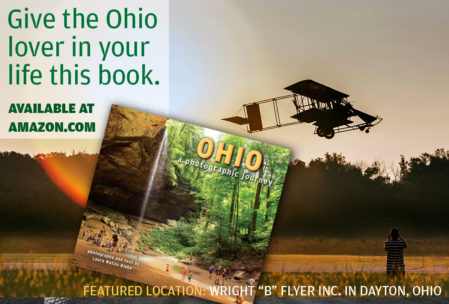
The book “Ohio: Photographic Journey” features this image of the Wright “B” Flyer, a replica airplane that flies passengers into aviation history.

Write a Reply or Comment